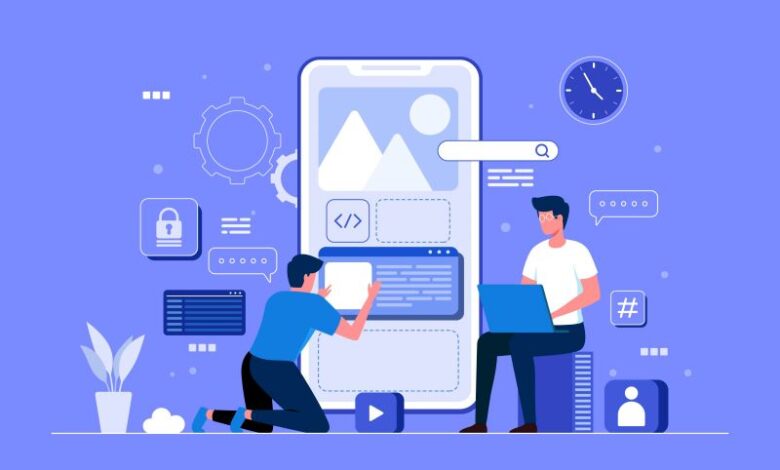Step-by-Step Guide on How to Develop an App: Turning Your Idea into a Reality

In today’s digital age, creating a mobile application is a powerful way to engage with your audience, grow your business, or launch a unique idea. If you’re curious about how to develop an app, you’re in the right place. This comprehensive guide will walk you through the entire process, from conceptualization to the final launch. Whether you’re building an app for Android or iOS, these essential steps will help you navigate the complexities and set you up for success.
Why Developing an App is Essential for Your Business
Mobile applications have revolutionized the way businesses interact with customers. With millions of apps available across platforms, consumers rely on them to shop, connect, and entertain. Whether you’re a startup or an established company, developing an app can expand your reach, improve customer engagement, and drive revenue. It’s not just a trend; it’s a crucial strategy for long-term success.
By learning how to develop an app, you can open doors to a massive pool of potential users and take your business to the next level.
Step 1: Conceptualize Your App Idea
Before you dive into the technical aspects, it’s essential to have a clear idea of what your app will do. Ask yourself the following questions:
- What problem will the app solve?
- Who is your target audience?
- How will it stand out from competitors?
Start by conducting market research to identify gaps in the app marketplace. Understanding what users want and need will help you refine your concept. Use online tools like Google Trends, app store research, and surveys to gain insights.
Step 2: Define Your App’s Core Features
Once you’ve nailed down your app idea, the next step is to define its key features. Focus on what’s necessary for your minimum viable product (MVP). Resist the urge to cram too many features into the first version of the app. Instead, list the core functionalities that will provide value to your users.
For example, if you’re developing a fitness app, essential features might include workout plans, a progress tracker, and personalized recommendations. Adding social sharing or in-app purchases can come later.
Step 3: Choose the Right Platform (Android, iOS, or Both)
One of the most critical decisions in app development is choosing the right platform. Do you want to build an app for Android, iOS, or both?
- Android has a larger global market share and is more accessible, especially for emerging markets.
- iOS users tend to spend more money on apps, which is something to consider if in-app purchases are part of your business model.
You can either develop a native app (for one platform) or a cross-platform app that works on both Android and iOS.
Step 4: Wireframing and Prototyping
Wireframing is essentially the blueprint of your app. It involves designing the app’s layout, user interface (UI), and navigation flow. You don’t need to be a professional designer to create a wireframe. There are plenty of tools available like Sketch, Figma, and Adobe XD, which allow you to build mockups of your app’s screens.
Once your wireframe is ready, the next step is creating a prototype. A prototype will help you visualize the app in action and make it easier to gather feedback from potential users before moving into full development.
Step 5: Choose a Development Method
Understanding how to develop an app involves choosing the right development method based on your resources, skills, and budget. There are three main options:
- Hire a Developer/Agency: If you don’t have technical expertise, hiring an experienced developer or a development agency is a good option. Agencies offer end-to-end services, including design, development, testing, and deployment.
- Use an App Builder: If you’re working with a limited budget, no-code or low-code app builders like Appy Pie or Bubble can help you create a functional app without extensive coding knowledge.
- Develop the App Yourself: If you have coding experience, you can develop the app yourself using programming languages like Swift for iOS or Kotlin for Android. This option gives you complete control over the development process but requires time and technical know-how.
Step 6: Backend and Frontend Development
The development phase involves building the backend (server, database, APIs) and frontend (user interface) of the app. Here’s a quick breakdown:
- Backend Development: This handles the app’s functionality, such as user authentication, data storage, and business logic. Developers often use languages like Node.js, Python, or Ruby on Rails for backend development.
- Frontend Development: The frontend is what the users interact with. This includes the design, layout, and responsiveness of your app. Frontend developers use Swift or Kotlin for native apps, while cross-platform apps use frameworks like Flutter or React Native.
Step 7: Testing Your App
Testing is crucial to ensuring your app works as intended and is free of bugs. You can’t skip this step if you want to deliver a high-quality product. There are several types of testing to consider:
- Functional Testing: Ensures all features work properly.
- Usability Testing: Measures how easy and intuitive the app is for users.
- Performance Testing: Assesses the app’s speed, scalability, and stability.
- Security Testing: Identifies vulnerabilities and ensures data protection.
Testing should be done both in-house and with external users for a well-rounded perspective. Utilize beta testers to catch issues that may not be apparent to developers.
Step 8: Deploying the App to the App Store
Once testing is complete, it’s time to launch your app. For Android, you’ll submit your app to the Google Play Store, and for iOS, you’ll submit it to the Apple App Store. Each platform has its own submission guidelines, approval processes, and timelines, so be sure to familiarize yourself with these.
You’ll also need marketing materials like a compelling app description, screenshots, and a promotional video. A strong marketing strategy will increase visibility and downloads for your app.
Step 9: Post-Launch Support and Updates
Launching the app is not the end of the road. Regular updates and maintenance are essential to keep users engaged and ensure your app remains relevant. Listen to user feedback and fix any bugs or issues that arise post-launch. Over time, you can introduce new features and enhancements based on user needs and market trends.
Final Thoughts
Understanding how to develop an app involves not only coding but also strategic planning, testing, and post-launch maintenance. Whether you’re developing an app to improve business operations, offer a new service, or capitalize on an innovative idea, following these steps will help streamline the process and ensure your app’s success.
By investing in a well-thought-out app development strategy, you can tap into new markets, increase customer engagement, and grow your brand.
For more interesting blogs click here.




